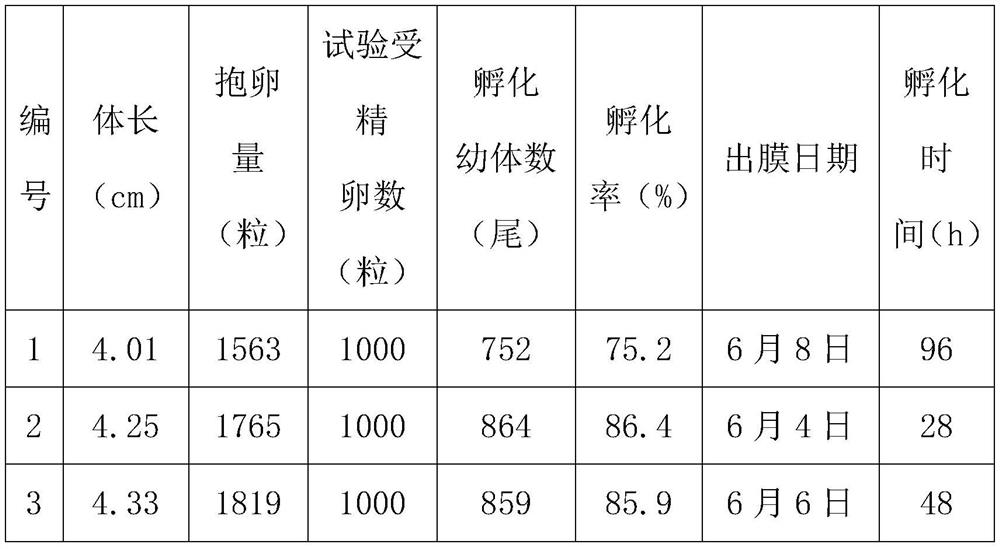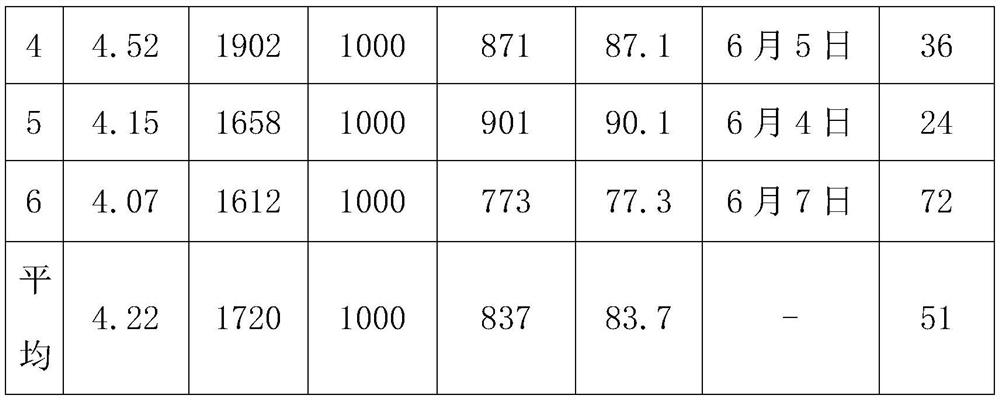A method for improving the hatching rate of fertilized eggs of Macrobrachium japonicus in vitro
A technology of fertilized eggs and hatching rate, which is applied in the direction of climate change adaptation, application, fish farming, etc., can solve problems such as operational errors, heavy daily management work, and fluctuations in hatching rate, so as to ensure hatching rate and reduce the risk of Saprolegniasis infection Risks, the effect of ensuring full incubation
- Summary
- Abstract
- Description
- Claims
- Application Information
AI Technical Summary
Problems solved by technology
Method used
Image
Examples
Embodiment 1
[0027] A method for improving the in vitro hatching rate of Macrobrachium japonica fertilized eggs, comprising the steps of:
[0028] Step 1: Select Macrobrachium prawns: On May 20, 2019, buy Macrobrachium ovale in the market, and select Macrobrachium ovale with a body length greater than 4cm, an average egg size of more than 1,500, strong vitality, and no injuries as seed breeding mothers. Book;
[0029] Step 2, cultivation of Macrobrachium prawn: 20 Macrobrachium ovale were placed in a white plastic cultivation pond for aerated feeding. The size of the white plastic cultivation pond was 320×70×20cm, and the water depth in the cultivation pond was 15cm, and the water temperature was controlled at 25°C. Feed the snail meat once a day, place plastic aquatic plants in the cultivation pond for Macrobrachium to inhabit, and change the culture water in the cultivation pond every 2 days, and the water exchange volume is 1 / 3 of the total water volume. When breeding until June 1, Two...
PUM
 Login to View More
Login to View More Abstract
Description
Claims
Application Information
 Login to View More
Login to View More - R&D
- Intellectual Property
- Life Sciences
- Materials
- Tech Scout
- Unparalleled Data Quality
- Higher Quality Content
- 60% Fewer Hallucinations
Browse by: Latest US Patents, China's latest patents, Technical Efficacy Thesaurus, Application Domain, Technology Topic, Popular Technical Reports.
© 2025 PatSnap. All rights reserved.Legal|Privacy policy|Modern Slavery Act Transparency Statement|Sitemap|About US| Contact US: help@patsnap.com


